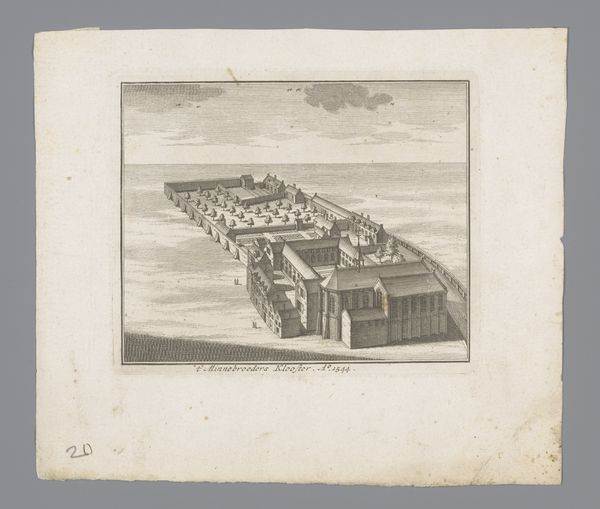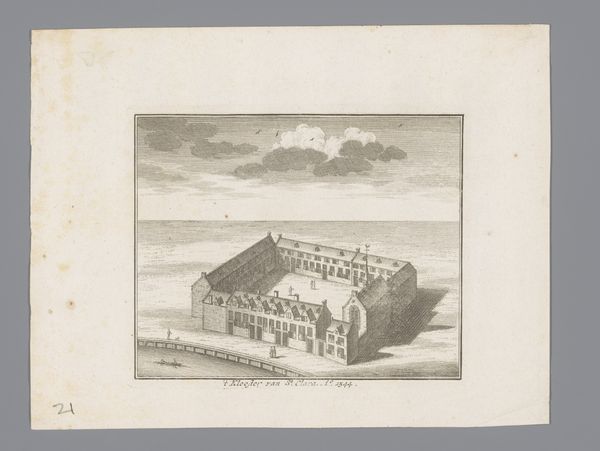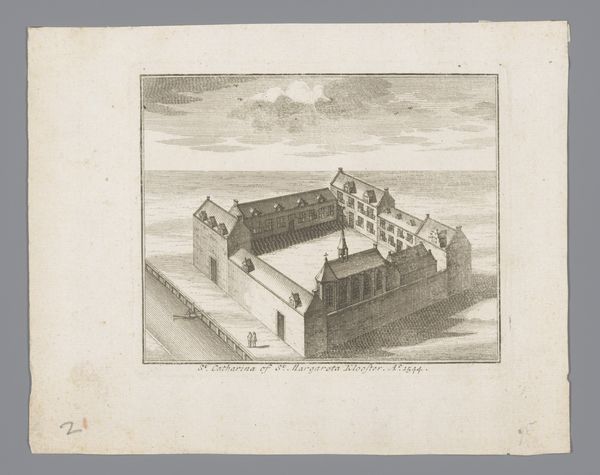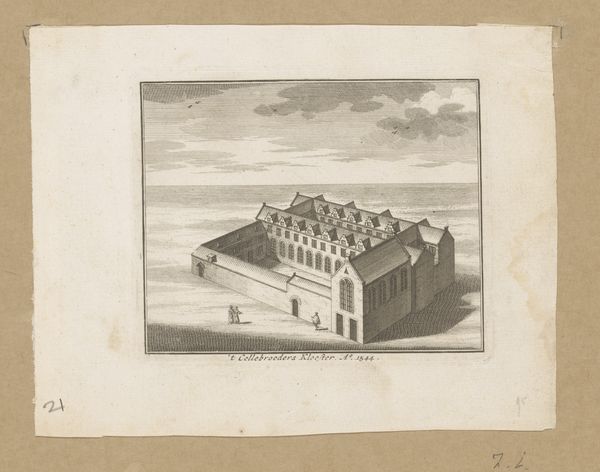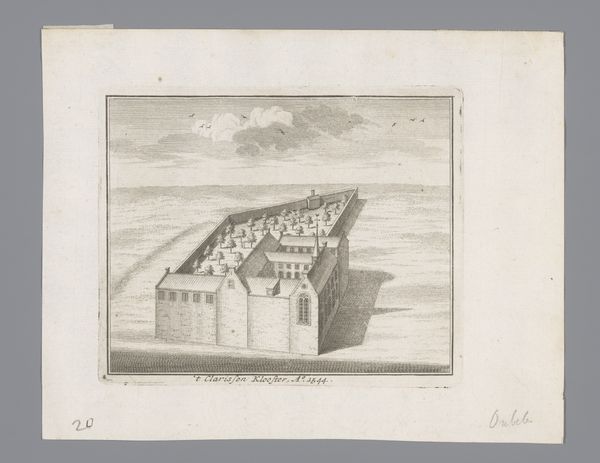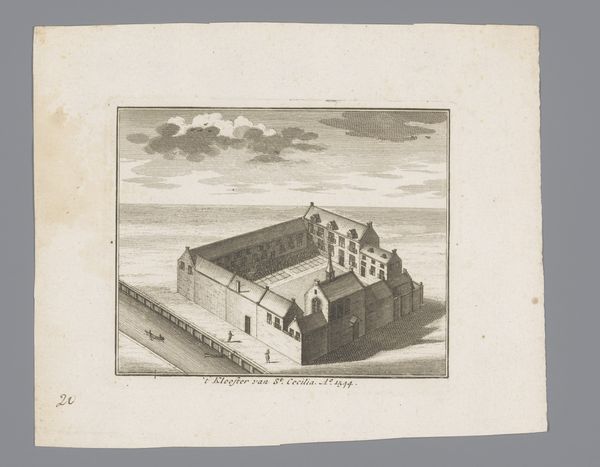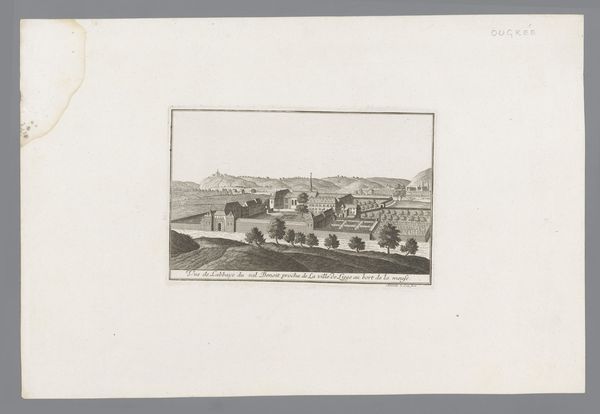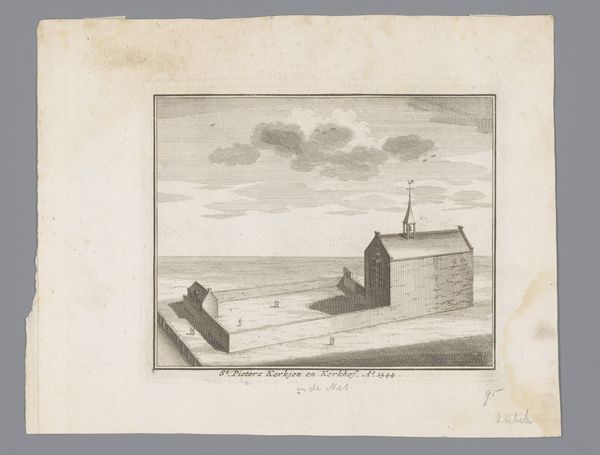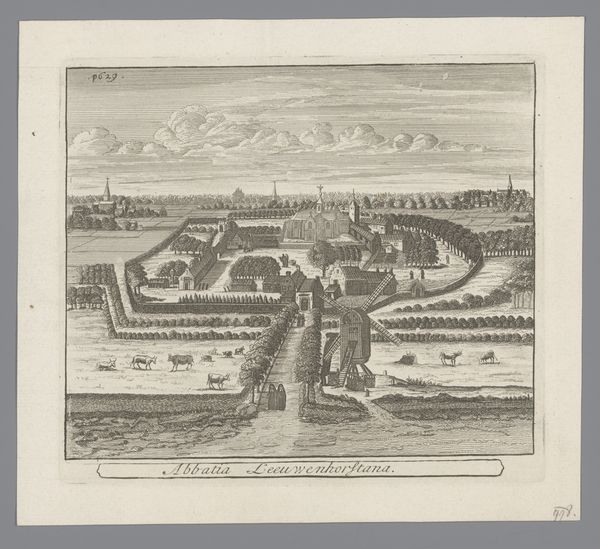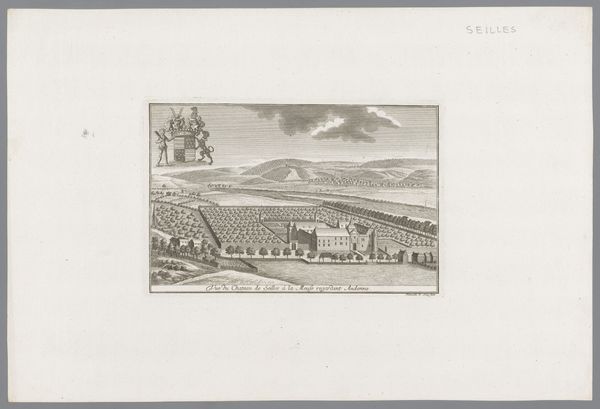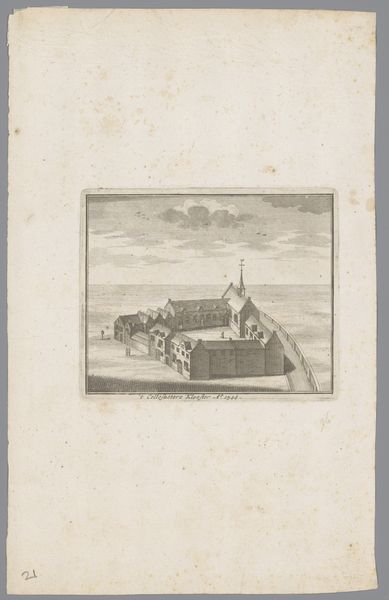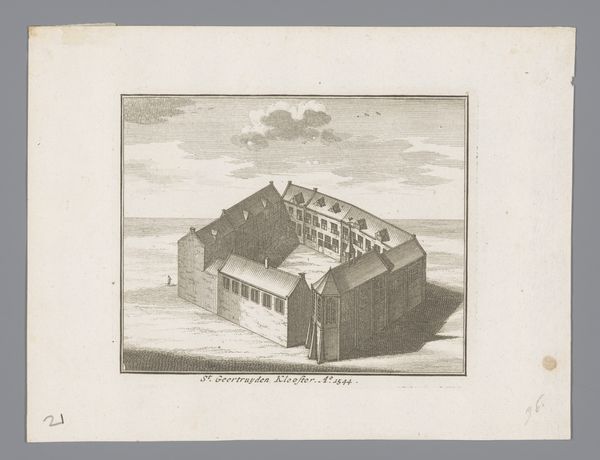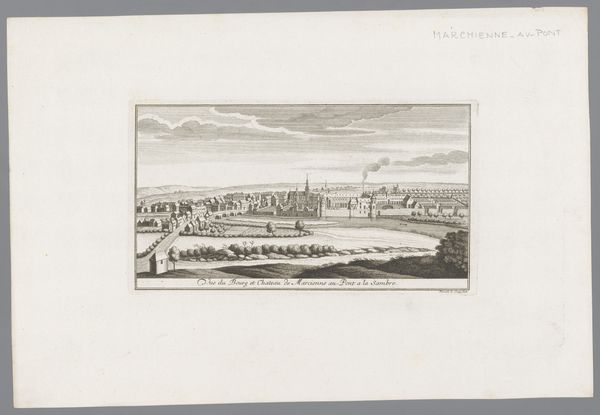
drawing, print, engraving
#
drawing
#
medieval
# print
#
cityscape
#
engraving
Dimensions: height 144 mm, width 236 mm
Copyright: Rijks Museum: Open Domain
Curator: Here we have an intriguing rendering entitled "Vogelvluchtaanzicht op het Minderbroederklooster", which translates to "Bird's-eye view of the Friars Minor Monastery." It's an engraving, dating from sometime between 1800 and 1900, created by an anonymous artist. Editor: It has such a somber, isolated feel, doesn't it? The linear precision of the engraving emphasizes the building's rigidity, almost like a fortress cut off from the world. The garden layout and its relation to the cloister seem almost regimented. Curator: Precisely. The monastic garden symbolizes contemplation, while the rigid design also highlights the regulation of daily life within. Consider the materials involved in creating such an engraving – the labor of the engraver, the production of the paper, all reliant on a social and economic structure of the time. This was a commercial print, intended for consumption. Editor: That reminds me, the bird's-eye view, though seemingly objective, positions the viewer in a detached, almost godlike perspective. This enforces a sense of control and understanding of this sacred space. The imagery signifies power structures both physically and spiritually. The gridlike structure and repetitive symbols of monastic life speaks to a deep desire for order, for divine structure in a chaotic world. Curator: Interesting how you tie the material to such human symbolism, I focus mostly on its making, seeing here an almost industrial effort of precise, uniform lines. This wasn't merely an artistic act; it was the production of an image that served a cultural function, documenting and disseminating architectural ideas. And thinking about the wider context, prints were consumed very differently by people of varying status in that society, Editor: Of course, who had access and where it was displayed shaped the message itself. In some ways, it strips away the monastic experience, standardizes it, so anyone buying the print possesses a contained and symbolic understanding. The image of a distant world suddenly becomes quite tangible. Curator: I am also thinking about who made such image, someone must have had the power or commercial acumen to envision its place in society at that time. An intriguing print, overall, one that intertwines materiality, manufacture, and representation, with significant historical narratives of isolation and sacredness. Editor: Absolutely. Examining this bird's-eye view gives one much to contemplate. A dialogue between the seen and unseen is at work here.
Comments
No comments
Be the first to comment and join the conversation on the ultimate creative platform.
